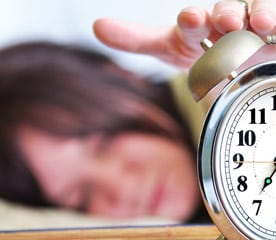Will you sleep in? On November 6, we must switch our clocks back one hour, as we move from Daylight Saving Time to Standard Time.
Daylight Saving Time, or DST, is the period of the year when clocks are moved one hour ahead, creating more sunlit hours in the evening during months when the weather is the warmest (“spring forward”). When we return to Standard Time, or ST, in November, we move them back by one hour (“fall back”).
The current rules for DST went into effect in 2007 in the US, representing a change for the first time in more than 20 years. They were enacted by the Energy Policy Act of 2005, which extended the length of DST by one month, for a duration of about 65% of the year, in the interest of reducing energy consumption. At present, Daylight Saving Time in the United States begins at 2:00 a.m. on the second Sunday of March and ends at 2:00 a.m. on the first Sunday of November.
At this time of year, the transition from DST to ST effectively moves one hour of daylight from the evening to the morning. To help ease your adjustment to standard time:
• Maintain your regular bedtime Saturday night, when clocks move back, and awaken at your regular time on Sunday morning, giving you an “extra” hour of sleep the next morning;
• Block out light and keep your sleeping area dark. Since the sun rises about an hour earlier during Standard Time, your sleep can be impacted, especially for people accustomed to awakening before or around sunrise. The light itself can disturb sleep, so it is always best to sleep in a darkened room;
• Increase the light when you wake up. Light has an alerting affect that may help you wake up, and will also help adjust your biological clock to the “new” sleep schedule.
If you generally have difficulty adjusting to the time change in the fall, gradually move bedtime and awakening later by 15 minutes every one to two days until November 6.
Don’t forget to “fall back” November 6th, and enjoy the extra hour of sleep. Remember, this might be a good opportunity to think about whether you’re sleeping enough.


